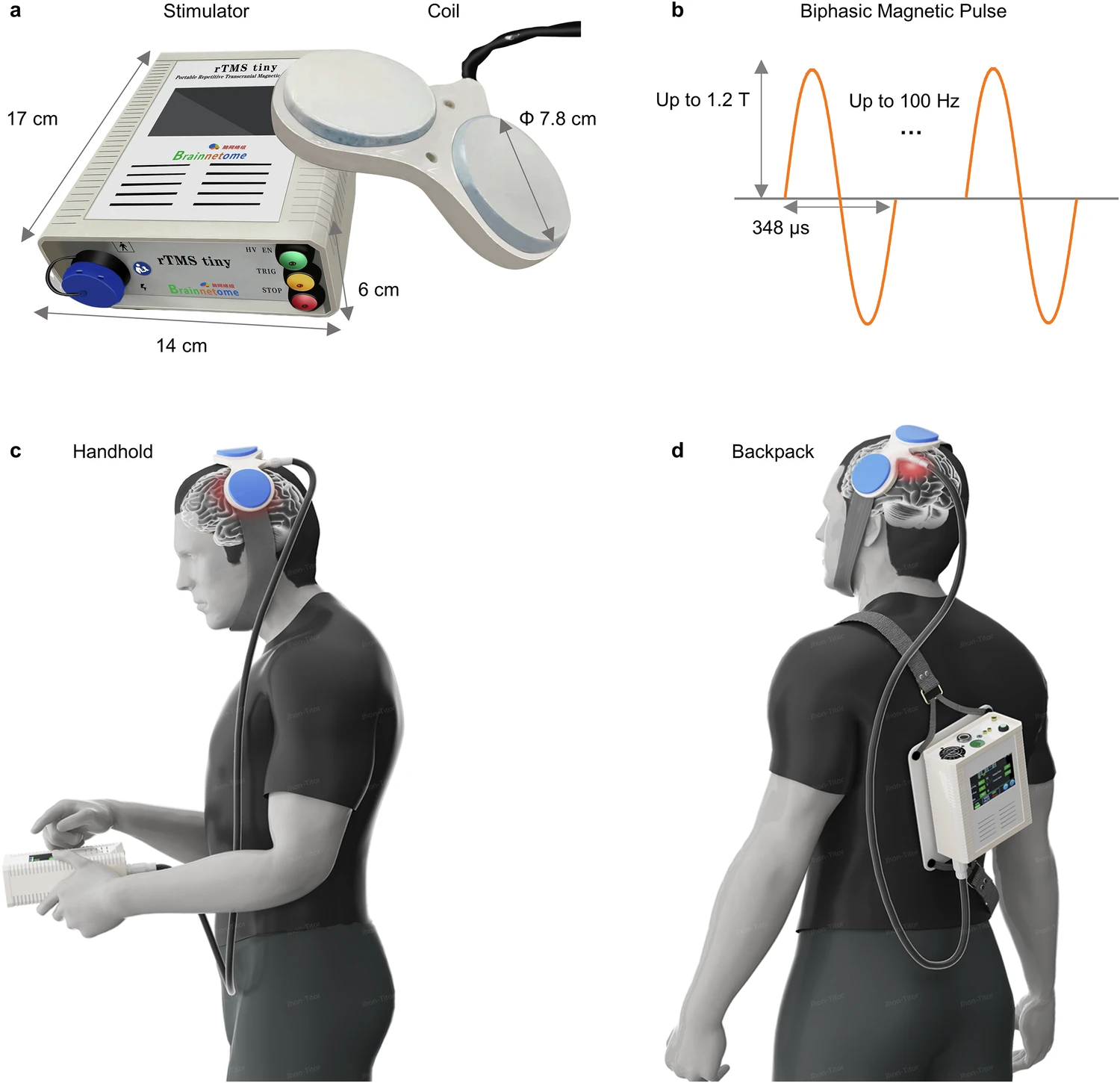Laboratory of Brain Atlas and Brain-Inspired Intelligence Develops Wearable Transcranial Magnetic Stimulation Device
Font:【B】 【M】 【S】
Recently, Brainnetome Research team at the Laboratory of Brain Atlas and Brain-Inspired Intelligence, Institute of Automation, Chinese Academy of Sciences, developed the world’s first battery-powered wearable suprathreshold repetitive transcranial magnetic stimulation (rTMS) device. The related results have been published in Nature Communications.
The successful development of the wearable rTMS device marks a major breakthrough in the treatment of mental disorders such as depression, stroke, and addiction. It offers patients more convenient and effective treatment options, enabling home and community-based therapy, while also providing a new tool for brain science research.
The team overcame two major challenges: lightweight magnetic core coil design and high-power-density high-voltage pulse driving technology. The lightweight magnetic core coil design reduced single-pulse energy consumption to less than one-tenth that of traditional commercial rTMS devices, cutting peak power from 10 kW to 800 W while maintaining stimulation intensity and coil weight. The high-power-density pulse driving technology increased the driver’s power density to over ten times that of traditional devices, reducing the main unit’s weight from 55 kg to 3 kg and enabling battery-powered, fully wearable use in all scenarios.
In human trials, the device successfully evoked motor-evoked potentials (MEPs) in the hands and legs, achieving rTMS-based neural modulation during free walking for the first time. This revealed the dynamic interactions between the central nervous system and different limb muscle activities.
The wearable rTMS device has tremendous potential in both clinical and research applications. For clinical use, it offers a new solution for treating neuropsychiatric conditions like depression, allowing patients to use it anytime, anywhere, significantly expanding access, reducing healthcare costs, and improving treatment adherence. For research, it provides a new tool to study dynamic brain function changes in naturalistic settings and to causally verify the roles of different brain regions during free movement. In the future, wearable rTMS devices could also integrate with non-invasive brain signal monitoring techniques such as EEG and near-infrared spectroscopy, making large-scale real-world applications of closed-loop brain-computer interfaces possible.
The paper’s co–first authors are Associate Researcher Zihui Qi and Senior Engineer Hao Liu from the Brain Network Group and the Beijing Key Laboratory for Brain-Computer Interfaces. Corresponding author is Professor Tianzai Jiang. Other main contributors include Professors Nianming Zuo, Ming Song, Lingzhong Fan, Associate Researcher Zhengyi Yang, Assistant Researcher Fang Jin, and Engineers Yihang Wang and Xuefeng Lu. This research was supported by the “Science and Technology Innovation 2030 – Brain Science and Brain-Inspired Research” Major Project and the National Natural Science Foundation of China.
Paper Information:
Qi, Z., Liu, H., Jin, F. et al. A wearable repetitive transcranial magnetic stimulation device. Nat Commun 16, 2731 (2025).

Wearable Repetitive Transcranial Magnetic Stimulation
Copyright Institute of Automation Chinese Academy of Sciences All Rights Reserved
Address: 95 Zhongguancun East Road, 100190, BEIJING, CHINA
Email:brain-ai@ia.ac.cn